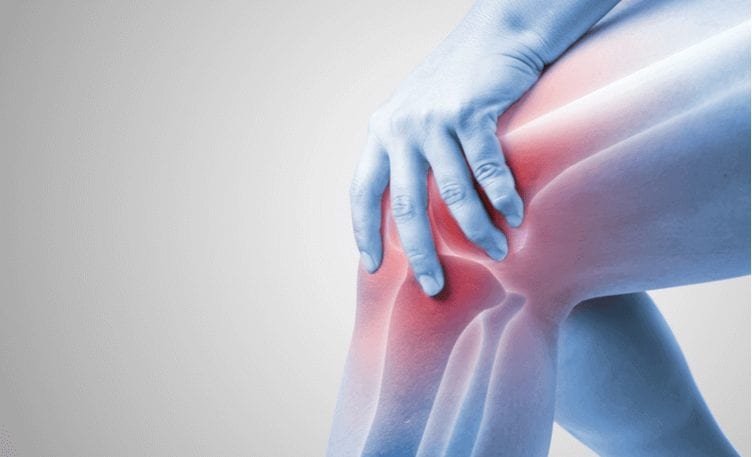Healthy Living
As the temperature takes a dip, joint pain elevates high

With the mercury dropping down and the temperatures turned low, it marks the beginning of hot beverages, warm clothes, cozy beds, lazy days in the blanket, some cold and cough, and revival of joint pains. In the cold weather, joints are likely to pain more than they usually do. This occurs more so for people with arthritis or those who happen to have a precursor to arthritis. Many people complain of stiff joints during cold weather particularly when they first make a movement.
The winter weather makes the muscles lose more heat and contract which creates a tightness through the body. Hence, ligaments and joints get stiffer, muscles lose their range of motion and nerves can be easily compressed especially in elderly people or those with injuries specifically under the belt area. The temperature dip forces the muscles to work harder, leading to some damage to the muscle tissue and increased soreness. Experts also explain that when the weather is cold, the body usually conserves heat and sends more blood to the organs in the center of the body like the heart or the lungs. This makes the blood vessels of the arms, legs, shoulders, and knee joints to tighten. The reduced blood flow further makes the joints cold and stiff, leading to pain and discomfort. Some also say that when the weather is cold or damp, barometric pressure changes causing an inflammatory response in the joints, due to changes in blood circulation and nerve fiber sensitivity.
The pain is most likely to occur in weight-bearing joints and the major joints of the body like the knees, hips, and ankles. The people who run more in the outside cold weather also get more affected.
Some factors that lead to joint pains during cold weather include:
- Lesser the temperature, the more the hard work put in by the muscles and more the pain.
- Alteration in the barometric pressure which can make the body tissue expand and increase the stress on the joints.
- Sensitivity also increases during cold and so more pain especially if a person suffers from rheumatoid arthritis.
- Reduced physical activity and decreased exercise which leads to muscle stiffness.
- Joints also tend to have less elasticity in the cold but when warmed up, they stretch better.
RELIEVING THE COLD WEATHER JOINT PAIN
While experiencing stiffness and pain during winters is an extremely common occurrence, it is not very difficult to avoid it. The basic is to keep yourself warm, not just by lying inside a blanket but also by sufficient physical activity. Some ways of keeping yourself warm to avoid joint pains could be:
- Before you set out for exercising in the cold, you must do a proper warm-up and stretch which is generally longer than the warm-up you do in summer temperatures. This will open up your muscles, make them more flexible before you get exercising and prevent further stiffness as well.
- Even during pauses or breaks in your run or during your exercise routine, ensure to implement dynamic movements to keep yourself warm and agile otherwise your joints and muscles can begin to feel stiff during those breaks as the body temperature goes down.
- Not just warm-up, a proper cool down to let your body experience the correct intensity is equally important. This also aids the reduction of tightening in the muscles which might occur after exercising.
- If the weather is extremely chilly, avoid stepping out for a run or exercise. Alternatively consider exercising indoor but do not skip it, even if you do it for a lesser duration. Staying active is essential for better functioning of the muscles and joints. After a long duration of no activity, the soreness or pain tends to be more during that first movement you do but if you continue the movement, the muscles warm-up and won’t bind up so much. Exercising also improves the flow of blood and oxygen throughout the body.
- If you still experience joint pain, despite a proper warm-up and cool-down inclusive exercising, visit an orthopedist or physical therapist to ensure there is no injury. Pain is not always a result of an injury; it could even be vice-versa where joint pain can lead to injuries. Not just that if stiffness of muscles is left unaddressed then that can cause injury too and worsen the situation.
- Dress-up in layers and keep your body warm, protecting your skin and joints from outdoor cold exposure.
- The often-missed point in the tightness of the muscles (especially in the upper body) is our posture. Instead of scrunching up over a period of time and further stiffening the muscles, it is important to lengthen your entire body, pulling it up, elongating your back, getting your shoulders down, and maintain a better posture. Doing shoulder rolls, neck rolls, and arm rolls while working long hours sitting also helps.
- If someone is an arthritic patient, then they are likely to experience more weakness, hence reduce movement and so more soreness. They must work to strengthen their arthritic or stiff joints even before winter arrives and constantly work on them.
Contributed by Dr. Ravi Kelkar, Consultant Orthopaedics, Columbia Asia Hospital Hebbal





























